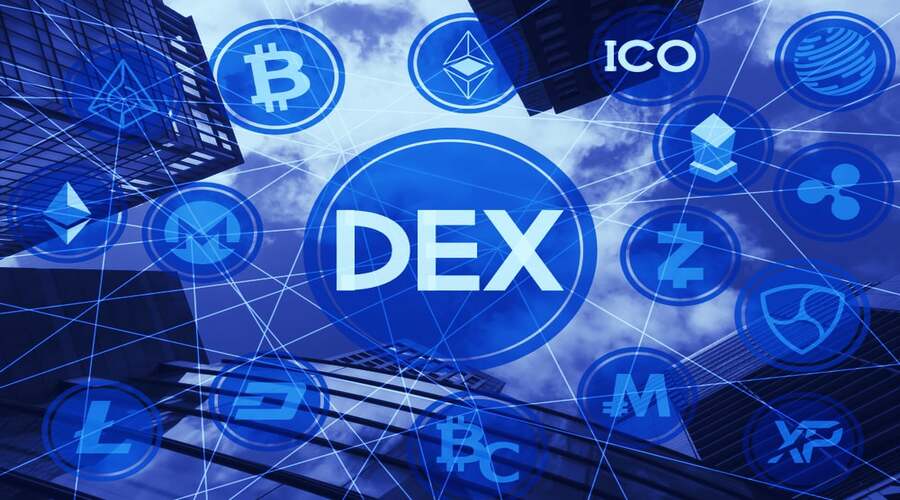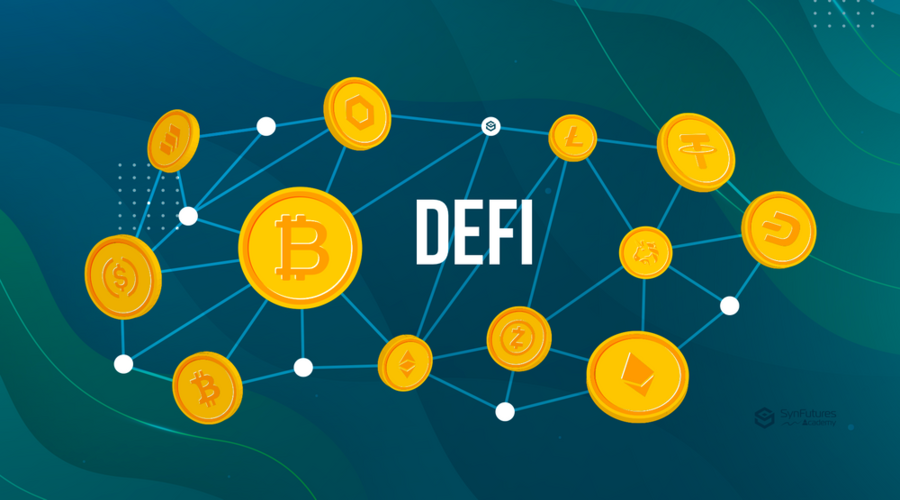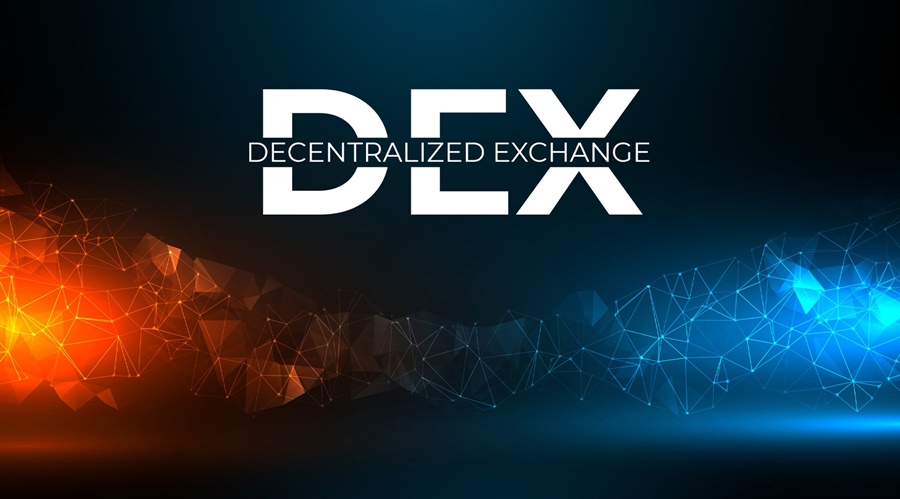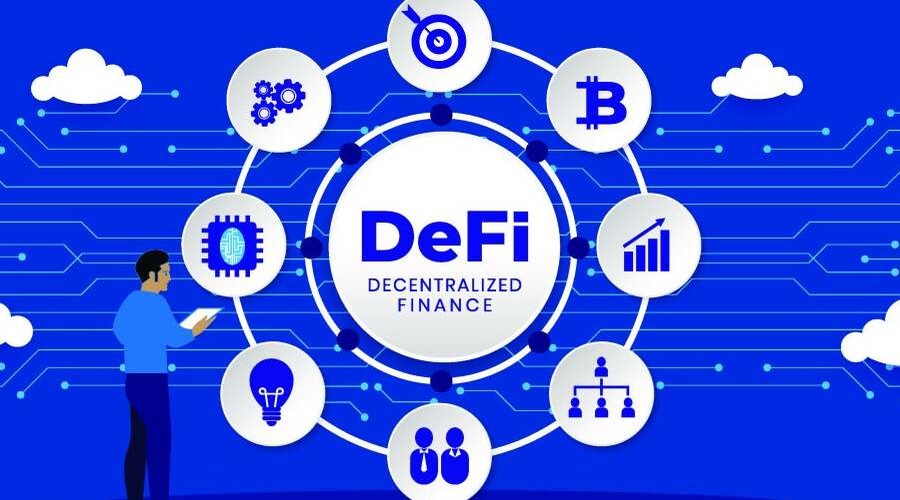Decentralized exchanges (DEXs) have emerged as a popular alternative to centralized exchanges in the cryptocurrency market. While DEXs have faced challenges in their early years, such as limited liquidity and complex user interfaces, they have continued to evolve and improve. In this article, we will explore the future of DEXs, including predictions and possibilities for the industry.
Introduction
To begin, let’s examine why DEXs have become increasingly popular in the cryptocurrency market. DEXs allow for greater control over funds and greater transparency in trading, as they operate on a decentralized network without the need for intermediaries. Additionally, DEXs provide greater security for traders, as funds are held in a non-custodial manner and are not subject to the risks associated with centralized exchanges.
Increased Adoption and Trading Volumes
One of the most significant predictions for the future of DEXs is increased adoption and trading volumes. As the cryptocurrency market continues to grow and mature, more traders are turning to DEXs as a viable alternative to centralized exchanges. This increased adoption is likely to drive up trading volumes on DEXs, making them a more attractive option for traders.
Improved Liquidity
Another prediction for the future of DEXs is improved liquidity. One of the major challenges facing DEXs in their early years was limited liquidity, as trading was often restricted to a limited number of tokens and trading pairs. However, as the industry has grown, more liquidity providers have entered the market, making it easier for DEXs to offer a wider range of trading options.
Interoperability and Cross-Chain Trading
Interoperability and cross-chain trading are also possibilities for the future of DEXs. Interoperability refers to the ability of different blockchain networks to communicate and work together, while cross-chain trading refers to the ability to trade cryptocurrencies across different blockchain networks. As the industry continues to develop, it is likely that DEXs will incorporate interoperability and cross-chain trading features, making it easier for traders to access a wider range of assets.
Integration with Traditional Finance
As DEXs continue to grow and mature, it is also possible that they will be integrated with traditional finance systems. This integration could involve partnerships with traditional financial institutions, such as banks or brokerages, or the development of hybrid platforms that combine decentralized and centralized features. By integrating with traditional finance systems, DEXs could attract a wider range of traders and improve their legitimacy in the eyes of regulators.
Regulatory Challenges for DEXs
One of the significant challenges facing DEXs in the future is regulatory uncertainty. While the decentralized nature of DEXs can provide greater security and transparency for traders, it also makes them more difficult to regulate. The lack of a central governing body or intermediary means that regulatory agencies may struggle to enforce laws and regulations on DEXs. This regulatory uncertainty can lead to legal and financial risks for DEXs and their users.
User Experience Improvements
Another area for improvement in the future of DEXs is the user experience. While DEXs have made significant progress in improving their user interfaces, there is still room for improvement. DEXs must continue to innovate and improve their user experience to attract and retain traders. This may include improving the speed and efficiency of trading, simplifying the trading process, and enhancing the security and transparency of transactions.
Decentralized Order Book vs. Automated Market Maker (AMM) Models
Decentralized exchanges can use two different models for matching trades: the decentralized order book model and the automated market maker (AMM) model. The decentralized order book model is similar to the model used by centralized exchanges, where buy and sell orders are matched on an order book. The AMM model, on the other hand, uses a mathematical formula to determine the price of a trade based on the supply and demand of assets in a liquidity pool. While both models have their advantages and disadvantages, the AMM model is becoming increasingly popular due to its simplicity and ability to provide liquidity for less popular assets.
Security and Trustlessness
One of the primary advantages of DEXs is their ability to provide greater security and trustlessness for traders. Unlike centralized exchanges, which rely on a central authority to hold funds and match trades, DEXs use smart contracts to automate these processes. This decentralized approach reduces the risk of hacking or theft, as there is no central point of failure. Additionally, DEXs can provide greater trustlessness for traders, as they do not rely on a central authority to verify transactions.
Cross-Chain Interoperability
Cross-chain interoperability is another area for potential improvement in the future of DEXs. Currently, many DEXs are limited to trading assets on a single blockchain network. However, as the industry continues to develop, it is likely that DEXs will incorporate cross-chain interoperability features, allowing for the trading of assets across multiple blockchain networks. This could provide greater access to a wider range of assets and improve the overall liquidity of DEXs.
Decentralized Finance (DeFi) Integration
Decentralized finance (DeFi) has emerged as a major trend in the cryptocurrency industry, with a focus on creating a decentralized financial system that is open and accessible to everyone. DEXs are a critical component of the DeFi ecosystem, providing a decentralized platform for trading cryptocurrencies and other assets. In the future, it is likely that DEXs will become even more integrated with DeFi protocols, providing a more seamless and efficient user experience for traders.
New Trading Models
As DEXs continue to evolve, new trading models are likely to emerge. One possibility is the emergence of peer-to-peer trading, where traders can exchange cryptocurrencies directly with each other, without the need for an intermediary. This model could provide greater control and flexibility for traders, while also reducing trading fees and improving transaction speed.
Conclusion
In conclusion, the future of DEXs is filled with possibilities and challenges. While DEXs have already made significant progress in providing a decentralized and transparent platform for cryptocurrency trading, there is still room for improvement in areas such as regulatory compliance, user experience, and integration with the broader DeFi ecosystem. With continued innovation and development, DEXs have the potential to revolutionize the financial industry, providing greater access and transparency to all.



